The WD Black SN770 is the company’s latest NVMe PCIe Gen4 SSD, featuring an in-house SanDisk controller and available in capacities up to 2TB. This DRAM-less client drive is meant for most general use cases, including gaming, demanding software, and speedy OS boot-ups. With PCIe Gen4 adoption and motherboard support now mainstream, WD indicates that the SN770 will help consumers make their transition to the new technology more affordable and accessible. The SN770 is the budget model of the WD Black line, with the impressive SN850 as the flagship option.
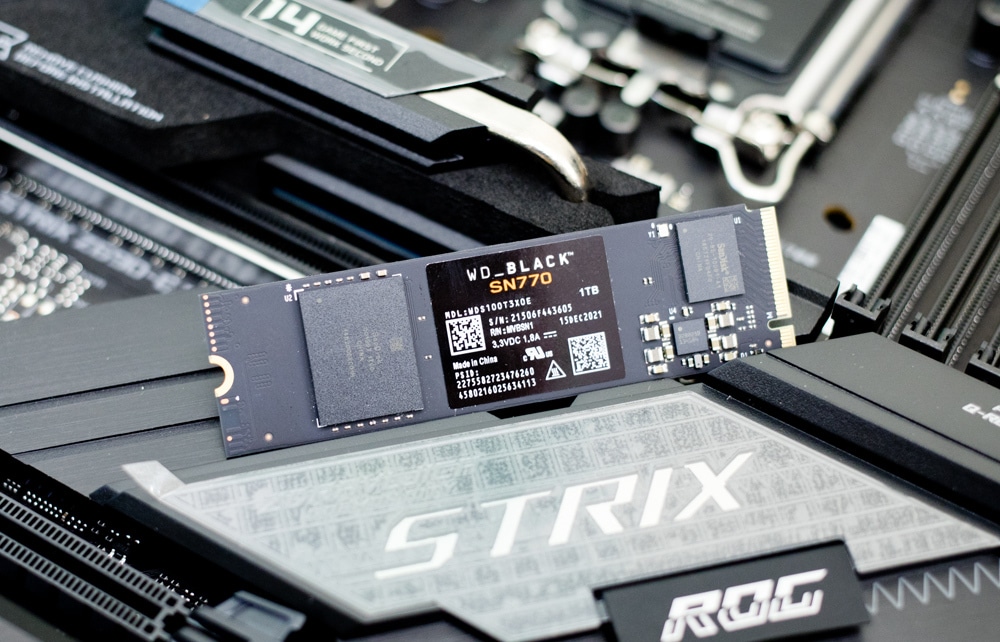
WD Black SN770
For performance, the WD quotes the SN770 with sequential read speeds up to 5,150MB/s (1TB and 2TB models), while write speeds are expected to hit up to 4,900MB/s for the 1TB model. These read and write numbers are 40 and 60 percent higher than the previous SN750SE model. For random reads and writes, WD expects users to see up to 740,000 IOPS in reads (1TB model) and up to 800,000 IOPS in writes (1TB and 2TB models).
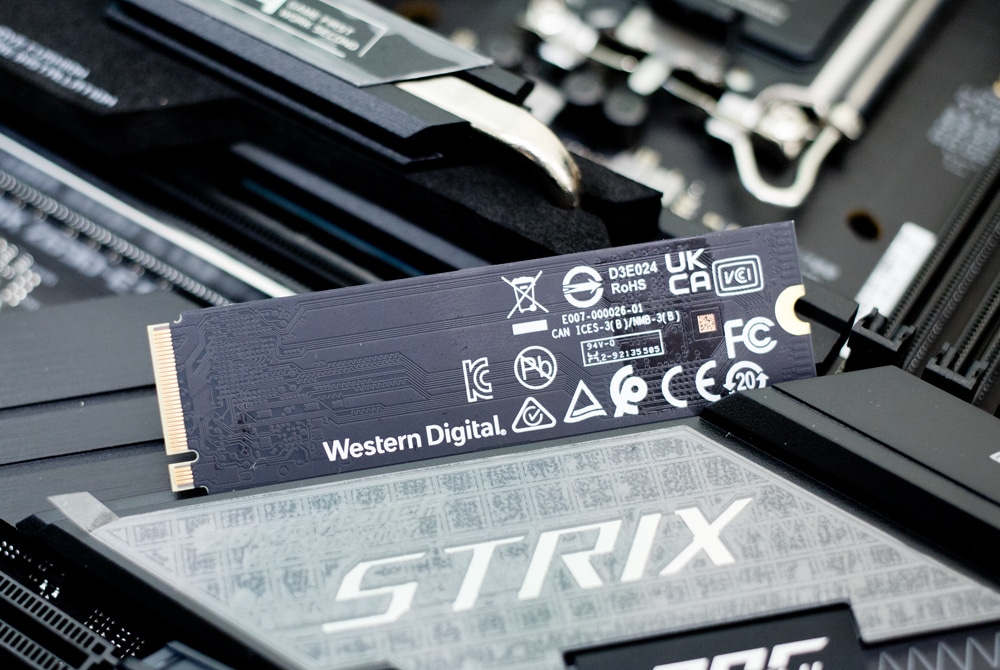
WD has also added advanced thermal management to the SN770, indicating that it will allow for more consistent performance and a 20% increase in power efficiency over their past NVMe SSD releases. For reliability, the Mean Time To Failure (MTTF) rating is specced at 1.75 million hours.
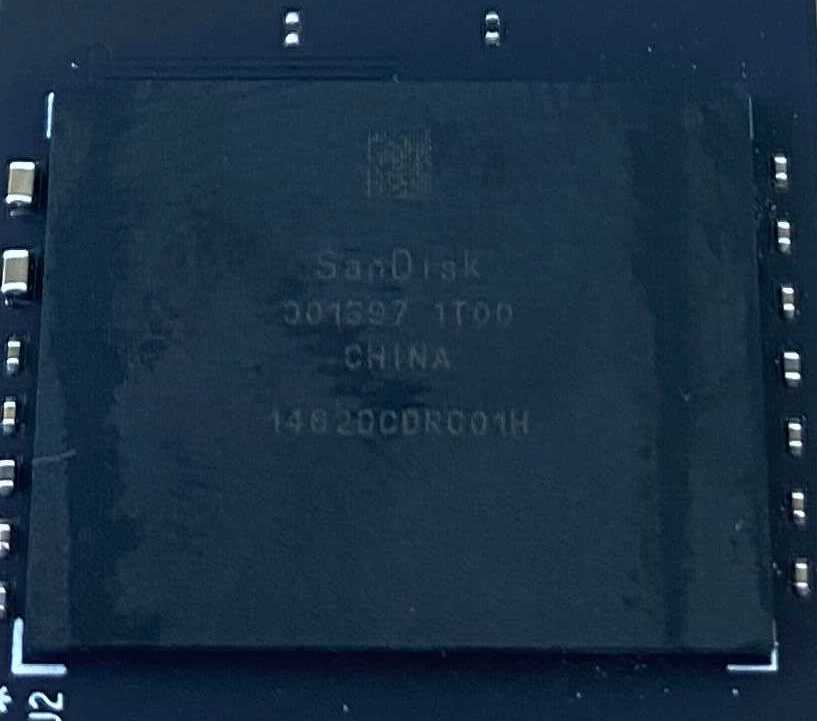
From the hardware side, WD says the SN770 features a new in-house controller and the SSD leverages a DRAM-less design. This allows it to maintain a lower cost profile, but traditionally, means the SSD will see some performance hit under intensive workload conditions.
Backed by a limited 5-year warranty, the WD Black SN770 is available for approximately $60 (250GB), $80 (500GB), $130 (1TB), and $270 (2TB). We will be looking at the 1TB model for this review.
WD Black SN770 Specifications
| Available Capacities | 250GB, 500GB, 1TB, 2TB | |||||||||||||||||||||||||
| Interface | PCIe Gen4 16 GT/s, up to 4 lanes | |||||||||||||||||||||||||
| Form Factor | M.2 2280 | |||||||||||||||||||||||||
|
Endurance Up To |
250GB: 200 TBW
500GB: 300 TBW 1TB: 600 TBW 2TB: 1200 TBW |
|||||||||||||||||||||||||
| Warranty | 5-Year Limited | |||||||||||||||||||||||||
| MTTF4 | 1,7500,000 hours | |||||||||||||||||||||||||
| Operating Temperature5 | 0°C to 85°C | |||||||||||||||||||||||||
| Storage Temperature | -40°C to 85°C | |||||||||||||||||||||||||
| Sleep | 3.3mW9 | |||||||||||||||||||||||||
| Performance
|
|
WD Black SN770 Performance
Testbed
As we migrate into testing newer NVMe Gen4 SSDs, it required a platform shift in our lab to support the newer interface. We’ve also been migrating newer NVMe Gen3 SSDs to the same platform for better apples-to-apples comparisons between drive generations. For these reviews, we leverage the Lenovo ThinkSystem SR635 server, equipped with an AMD 7742 CPU and 512GB of 3200Mhz DDR4 memory.
NVMe is tested natively through an M.2 to PCIe adapter card in the edge-card slot, while U.2 drives are loaded in the front. The methodology used better reflects end-user workflow with the consistency, scalability, and flexibility testing within virtualized server offers. A large focus is put on drive latency across the entire load range of the drive, not just at the smallest QD1 (Queue-Depth 1) levels. We do this because many of the common consumer benchmarks don’t adequately capture end-user workload profiles.
SQL Server Performance
Each SQL Server VM is configured with two vDisks: 100GB volume for boot and a 500GB volume for the database and log files. From a system resource perspective, we configured each VM with 16 vCPUs, 64GB of DRAM and leveraged the LSI Logic SAS SCSI controller. While our Sysbench workloads tested previously saturated the platform in both storage I/O and capacity, the SQL test is looking for latency performance.
This test uses SQL Server 2014 running on Windows Server 2012 R2 guest VMs and is stressed by Quest’s Benchmark Factory for Databases. StorageReview’s Microsoft SQL Server OLTP testing protocol employs the current draft of the Transaction Processing Performance Council’s Benchmark C (TPC-C), an online transaction-processing benchmark that simulates the activities found in complex application environments.
The TPC-C benchmark comes closer than synthetic performance benchmarks to gauging the performance strengths and bottlenecks of storage infrastructure in database environments. Each instance of our SQL Server VM for this review uses a 333GB (1,500 scale) SQL Server database and measures the transactional performance and latency under a load of 15,000 virtual users.
SQL Server Testing Configuration (per VM)
- Windows Server 2012 R2
- Storage Footprint: 600GB allocated, 500GB used
- SQL Server 2014
- Database Size: 1,500 scale
-
- Virtual Client Load: 15,000
- RAM Buffer: 48GB
- Test Length: 3 hours
-
- 2.5 hours preconditioning
- 30 minutes sample period
Looking at SQL Server average latency, the WD SN770 had an average latency of 35ms placing at the bottom part of the leaderboard.
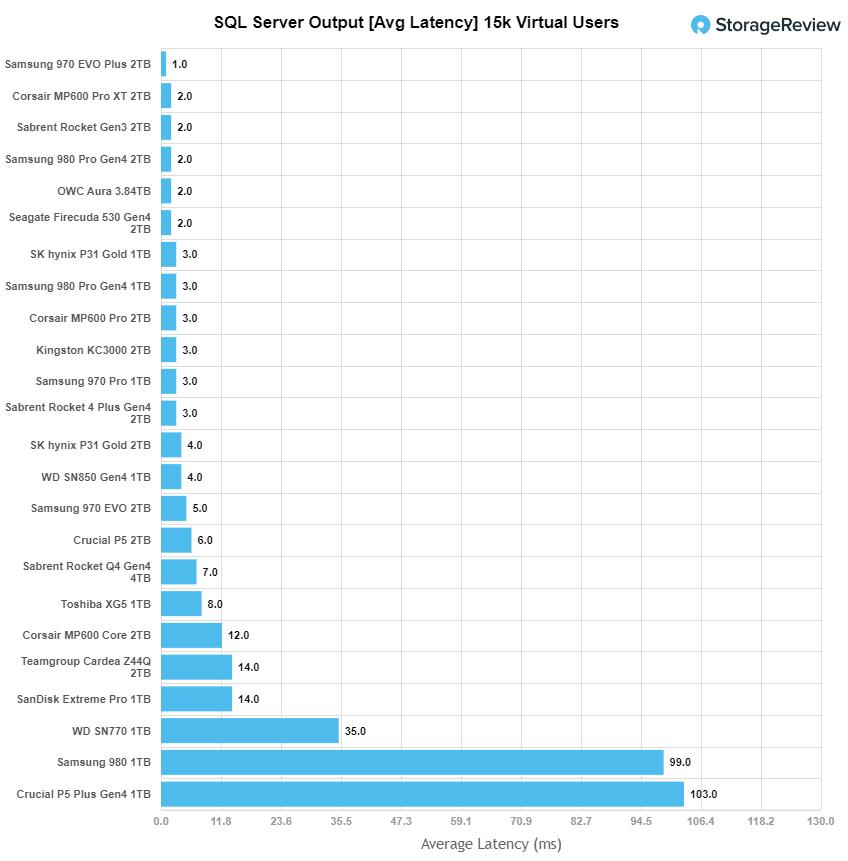
vdBench Workload Analysis
When it comes to benchmarking storage devices, application testing is best, and synthetic testing comes in second place. While not a perfect representation of actual workloads, synthetic tests do help to baseline storage devices with a repeatability factor that makes it easy to do apples-to-apples comparisons between competing solutions. These workloads offer a range of different testing profiles ranging from “four corners” tests, common database transfer size tests, to trace captures from different VDI environments.
All of these tests leverage the common vdBench workload generator, with a scripting engine to automate and capture results over a large compute testing cluster. This allows us to repeat the same workloads across a wide range of storage devices, including flash arrays and individual storage devices. Our testing process for these benchmarks fills the entire drive surface with data, then partitions a drive section equal to 5% of the drive capacity to simulate how the drive might respond to application workloads. This is different from full entropy tests which use 100% of the drive and take them into a steady state. As a result, these figures will reflect higher-sustained write speeds.
Profiles:
- 4K Random Read: 100% Read, 128 threads, 0-120% iorate
- 4K Random Write: 100% Write, 64 threads, 0-120% iorate
- 64K Sequential Read: 100% Read, 16 threads, 0-120% iorate
- 64K Sequential Write: 100% Write, 8 threads, 0-120% iorate
- VDI Full Clone and Linked Clone Traces
Comparables:
- WD Black SN850
- Kingston KC3000
- Crucial P5 Plus
- Corsair MP600 Pro XT
- Samsun 980 Pro
- Seagate Firecuda 530
- Sabrent Rocket 4 Plus
First up is our random 4K read. Here, the WD Black SN770 peaked at just 142,195 IOPS with a latency of 900µs, which placed well back in last place and half the IOPS of the next closest drive (Sabrent Rocket 4 Plus).
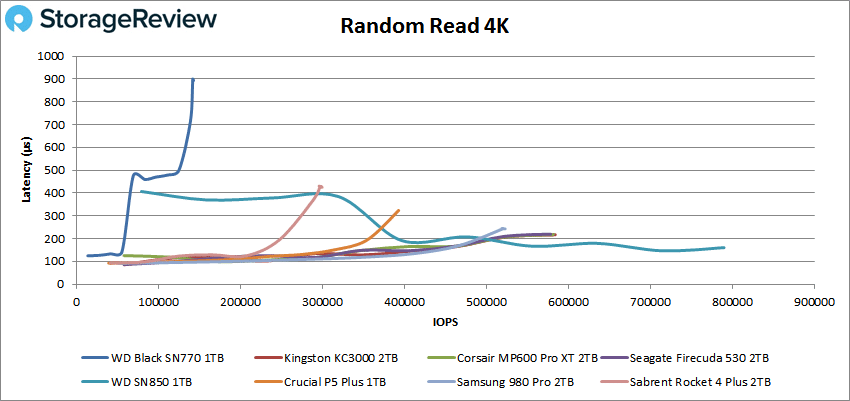
4K write told a similar story, instantly shooting up the chart in latency (as high as 6,751µs) and stopping at just 28,028 IOPS with 4,548µs.
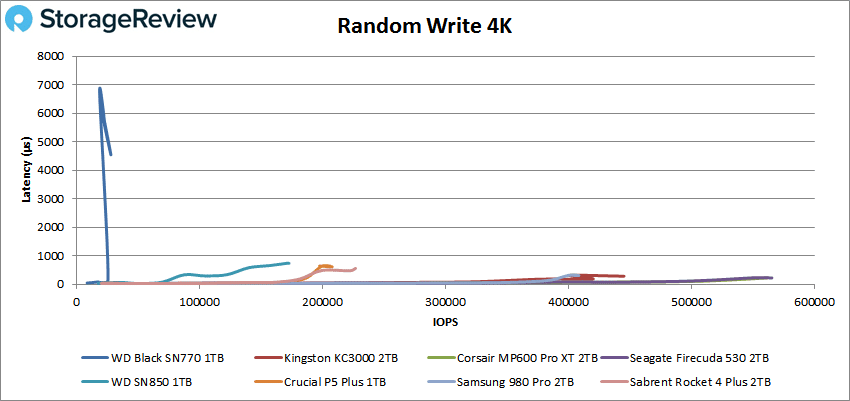
Switching over to sequential read workloads showed much better performance. Here, the new SN770 drive had sub-millisecond latency performance throughout with a peak of 68,935 IOPS (or 4,308MB/s) and 462.9µs latency, placing it around the lower-mid part of the leaderboard.
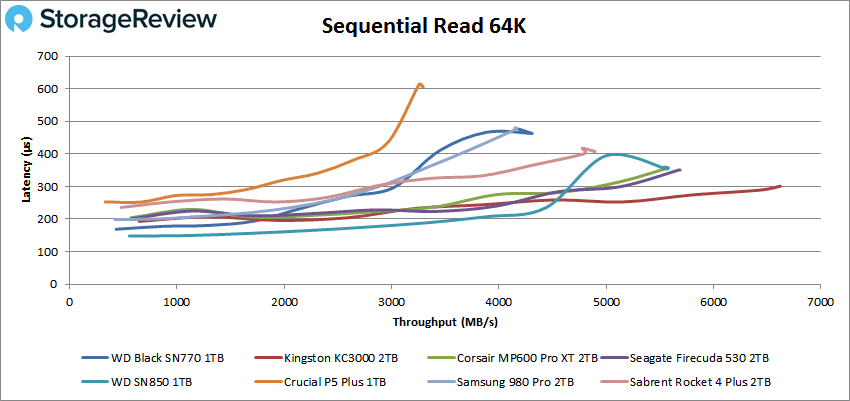
On the sequential write, the SN770 underwhelmed again, peaking at just 6,631 IOPS (which is just 415MB/s) with a latency of 2,403µs.
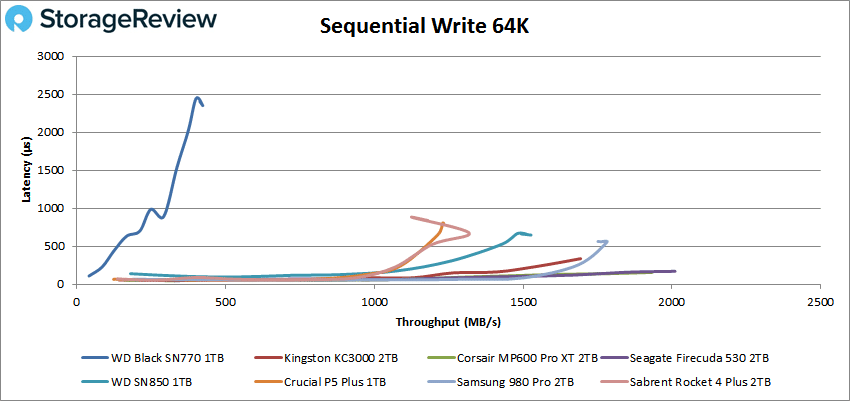
Now, we switched over to our VDI clone tests, Full and Linked, where the SN770 struggled once again. For VDI Full Clone Boot, the new WD drive peaked at just 44K IOPS at a latency of 319µs just before dropping off to 36K IOPS at 972µs in latency.
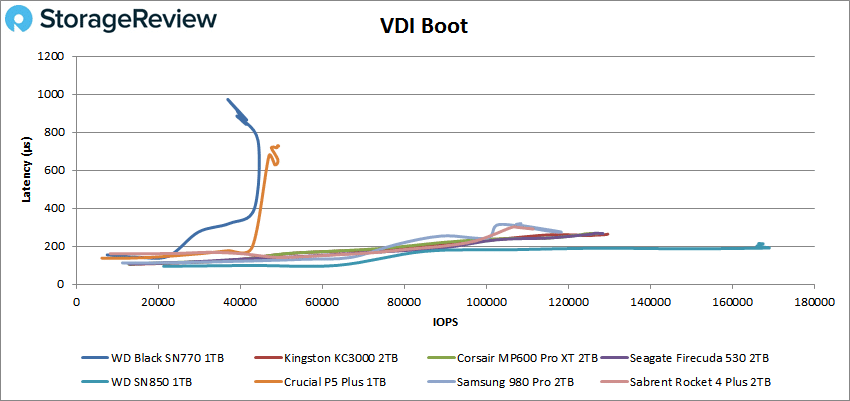
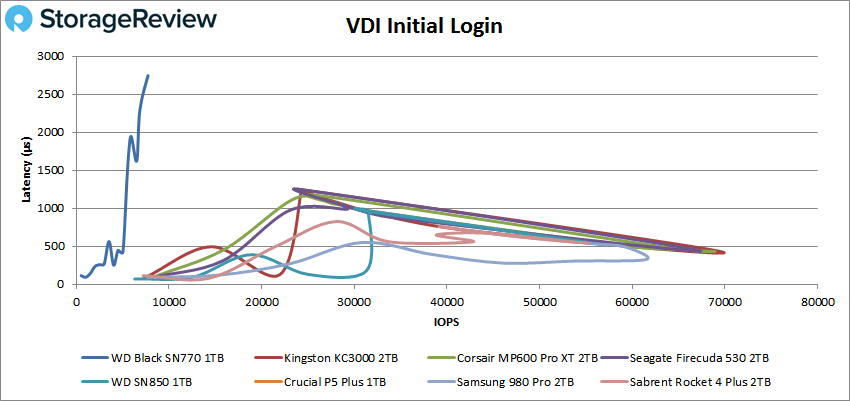
With the VDI FC Monday Login, the WD SN770 continued this course, peaking around 11K IOPS at 1,462µs before dropping off a bit at the end.
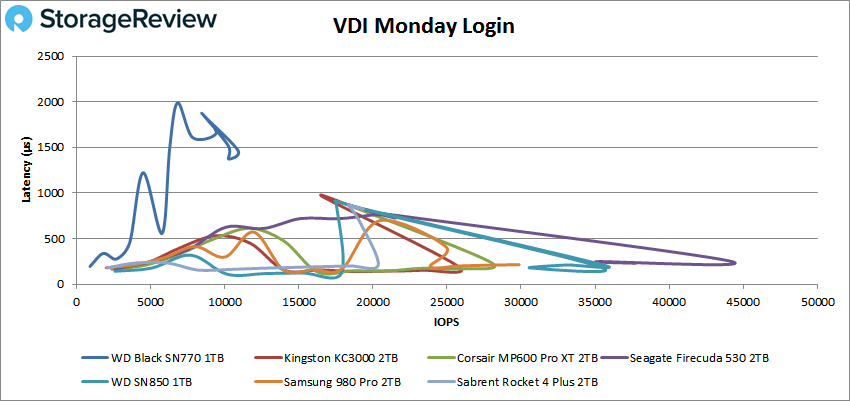
Blackmagic Test
In our Blackmagic test, we saw 4,213MB/s read and 4,416MB/s write. This put the drive above the threshold of a Gen3 SSD, but falls at the lower spectrum against Gen4 SSDs.
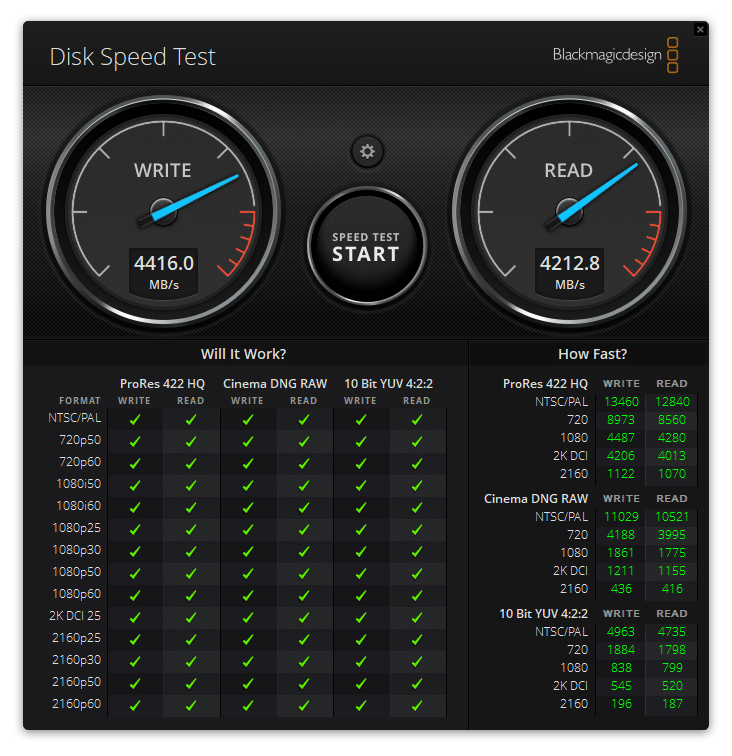
Conclusion
The WD Black SN770 is the newest M.2 Gen4 SSD from the company, and though it is marketed mainly for serious gamers, it is a more cost-optimized build more angled towards an entry-level SSD based on actual performance. Available in capacities from 250GB to 2TB, the new WD drive offers an MTBF rating of 1,750,000 hours and is quoted to reach modest sequential speeds up to 5.15GB/s read and 4.85GB/s write.
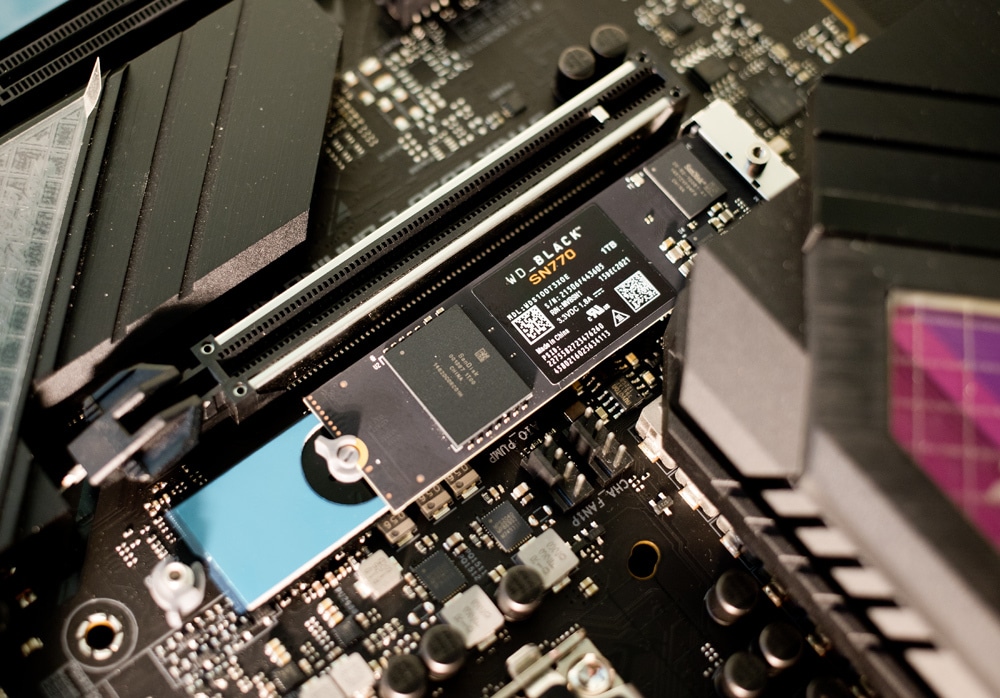
Getting right into its performance, the WD Black SN770 was a letdown during our benchmarking, posting results that left it far behind the other tested SSDs in essentially all of our workloads. With a DRAM-less design, it wasn’t a huge surprise. Not that there might never be a strong DRAM-less SSD on the market, but we’ve never encountered one to date. This was a bit of a contrast compared to the WD Black products we reviewed over the past few years, including the SN750 and the SN850, the latter of which was one of the best-performing consumer drives we’ve seen at the time of the review and easily the market leader in read performance.
Nonetheless, highlights include peak scores of 142,195 IOPS in 4K read, 28,028 IOPS in 4K write, 4,308MB/s in 64K read, and 415MB/s in 64K write. In our VDI Full clone tests, we saw 44K IOPS in boot, 28K IOPS in initial login, and 11K IOPS for Monday login. Lastly, our Blackmagic burst test results showed 4,213MB/s read and 4,416MB/s write.
While the WD Black SN770 performance was clearly underwhelming, it is meant as an inexpensive option for gamers looking to upgrade their system with the new Gen4 specification. To that end, it gets it over the Gen3 line in sequential read and write performance, but just barely in our testing.
It’s priced at roughly $60 for the 250GB model and $80 for the 1TB model, the former of which is $20 less than what the SN750 went for during its initial release. That said, the vastly superior WD Black SN850 (500GB model) is currently going for $100, so if you can open up your wallet a bit more it’s is certainly getting a relatively future-proof gaming drive with bar-setting performance.
If you’re on a very tight budget for a Gen4 drive where only sequential read speeds matter, then the SN770 would likely suffice. Ultimately though, WD causes confusion with the gaming-centric Black branding on the SN770. It would be more appropriate to put this squarely in the value-centric WD Blue category, so there’s less static as to expectations. Serious gamers will be joyous with the SN850. The SN770 is 64-bit purgatory by comparison.




 Amazon
Amazon